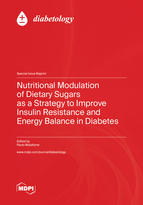The Impact of Moderate-to-High-Intensity Exercise Protocols on Glycated Hemoglobin Levels in Type 2 Diabetes Patients
Round 1
Reviewer 1 Report
Major:
1) The manuscript is titled as “The Impact of Exercise on glucotoxicity and glycated hemoglobin”. However, the manuscript is solely focused on HbA1C; there is no such discussion about glucotoxicity.
2) Why animals’ studies related to exercise and Type 2 diabetes were not included. I think it be really help improving the mini review as you can include mechanism behind the benefits of exercise.
3) Include an extra column in summary table and list how much decrease in HbA1C was observed in each study.
4) You should compare all the seven studies and try to find out what was common and what was different in all these studies and how similarities/differences impacted HbA1C levels.
Minor:
1) Line 13, health concern worldwide is considered as a severe.
2) Rewrite lines 45 to 46.
3) Rewrite lines 60 to 66; your message is not clear.
4) In Introduction, include statistics that show sedentary life/ lack of physical activity promotes diabetes.
5) Rewrite lines 143 to 145.
6) What is the relevance of lines 146-147 to the manuscript.
7) What is END, MCT, RT, MICT?
Author Response
Response to Reviewer 1 Comments
Point 1) The manuscript is titled as “The Impact of Exercise on glucotoxicity and glycated hemoglobin”. However, the manuscript is solely focused on HbA1C; there is no such discussion about glucotoxicity.
Response 1: Yes, I already changed the title.
Point 2) Why animals’ studies related to exercise and Type 2 diabetes were not included. I think it be really help improving the mini review as you can include mechanism behind the benefits of exercise.
Response 2) It's a pertinent comment, but our focus was on the impact of different exercise types on humans' glycated hemoglobin in this mini-review. But in future work, it would be interesting to integrate studies in an animal model.
Point 3) Include an extra column in summary table and list how much decrease in HbA1C was observed in each study.
Response 3) Excellent observation, thank you, I have already inserted it in table 1.
Point 4) You should compare all the seven studies and try to find out what was common and what was different in all these studies and how similarities/differences impacted HbA1C levels.
Response 4) I have added more information on the general characteristics of studies.
I have rewritten the paragraphs you suggested; I defined END, MCT, RT, MICT as acronyms, and included information about statistics that show a sedentary life/lack of physical activity increases the risk of developing diabetes.
Thank you very much for the suggestions. They were fundamental to improving the mini-review.
Reviewer 2 Report
Overall the information presented represents valuable information regarding the different modes of exercise training. That said, there are several areas in the article that requires a major revision. Comments are given below.
P.1, Line 24: The authors should change “sugar blood levels” to “blood sugar levels”.
p.1, Line 46: The authors have failed to address what is T2DM in detail. T2DM which is about 90-95% of cases of diabetes worldwide, results from insulin resistance (reduced response to stimulate insulin secretion) that leads to increased basal insulin release and there is a decline in the insulin stores.
As the title says glucotoxicity, the authors have talked about only HbA1c, but not glucotoxicity. This remains one of the areas of interest in diabetes, as it refers to how high blood glucose levels damage its own beta cells and causes a decline in insulin stores. The authors have not mentioned how exercise can affect this.
General comments:
The authors could give a schematic diagram of how the "high-intensity interval training" protocol affects insulin resistance markers and its effect on glucotoxicity and HbA1c levels.
Author Response
Response to Reviewer 2 Comments
Point 1) The authors should change “sugar blood levels” to “blood sugar levels”.
Response 1 - Yes, I have already done it, thanks.
Point 2) The authors have failed to address what is T2DM in detail. T2DM which is about 90-95% of cases of diabetes worldwide, results from insulin resistance (reduced response to stimulate insulin secretion) that leads to increased basal insulin release and there is a decline in the insulin stores.
Response 2 - Thank you very much for your comment. We have added more information to define T2DM better.
We changed the article's title to meet the subject addressed.
Thank you very much for the comments. They were essential to improve our article.






